Period of small oscillations in the two cases shown in figure is T1 and T2 respectively . Assume fluid does not have any viscosity , then
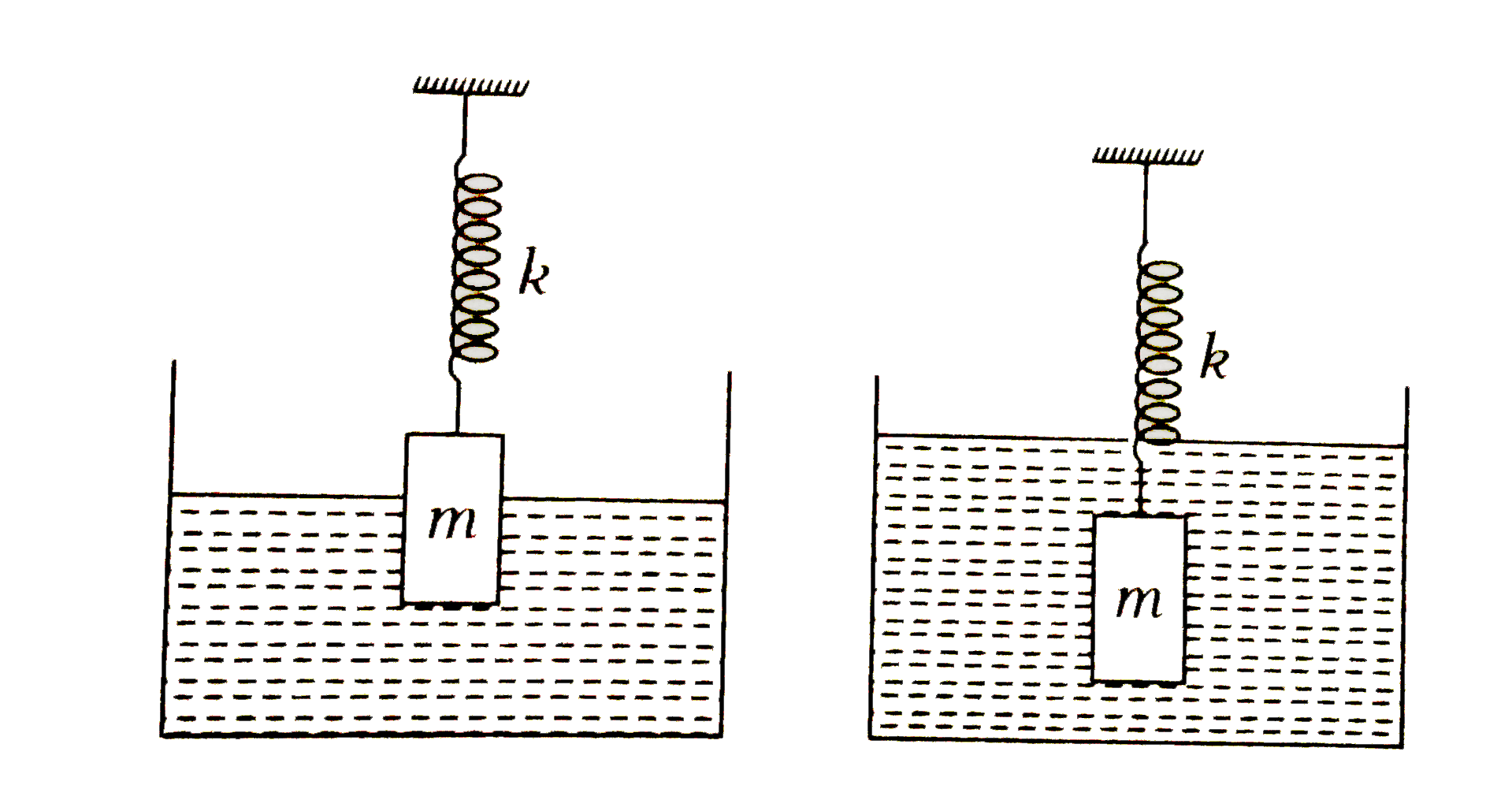
T1=T2
T1<T2
T1>T2
Cannot say anything
The correct Answer is:B
(b) T1=2π√mk+ρAg but T2=2π√mk
Hence , T1<T2
Similar Questions
Two tunnels are dug across the earth as shown in figure. Two particles P1 and P2 are oscillating from one end to the other of tunnel T1 and T2 respectively. At some instant particles are at position shown in figure. Then
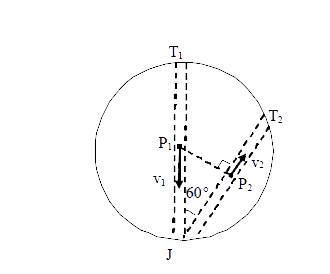
View SolutionThe periodic times of oscillation of a dip needle in two perpendicular vertical planes are t1 and t2 respectively. If the periodic time of the same needle in the magnetic meridian is t, showthat
1t41+1t42=1t4(1+sin2δ)
where δ is the angle of dip.
View Solution
Knowledge Check
A mass is suspended separately by two springs of spring constants k1 and k2 in successive order. The time periods of oscillations in the two cases are T1 and T2 respectively. If the same mass be suspended by connecting the two springs in parallel, (as shown in figure) then the time period of oscillations is T. The correct relations is
 AT2=T21+T22BT−2=T−21+T−22CT−1=T−11+T−12DT=T1+T2
AT2=T21+T22BT−2=T−21+T−22CT−1=T−11+T−12DT=T1+T2When a body is suspended from two light springs separately, the periods of vertical oscillations are T1 and T2. When the same body is suspended from the two spring connected in series, the period will be
ATp<T1<T2<TsBT2s=T21+T22C√Ts=√T1+√T2D1T2p=1T21+1T22A mass m is attached to two springs of same force constant K, as shown in following four arrangements. If T1,T2,T3andT4 respectively be the time periods of oscillation in the following arrangements in which case time period is maximum ?
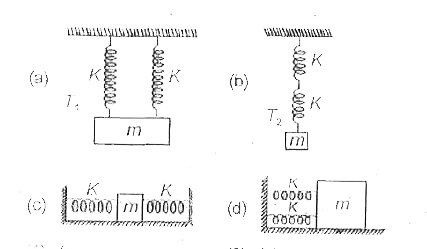 AaBbCcDd
AaBbCcDd
Determine the tensions T1 and T2 in the strings as shown in figure.
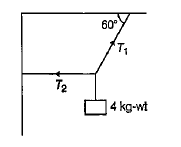
View SolutionDetermine the tensions T1 and T2 in the string as shown in figure.
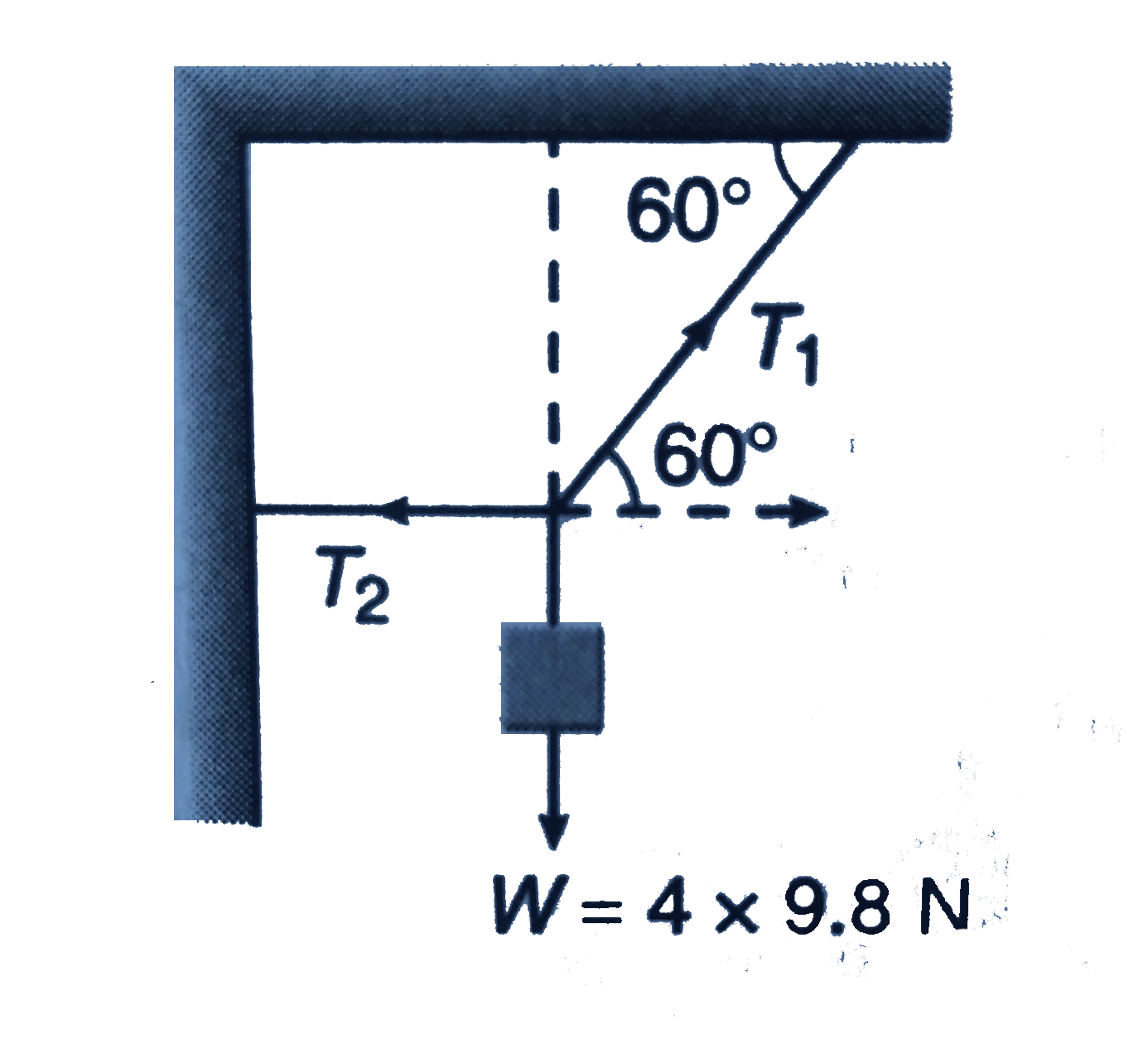
View SolutionA bar magnet, held horizontally, is set intom angular oscillations in earth's magnetic field. It has time periods T1 and T2 at two place, where the angles of dip are δ1 and δ2 respectively. Deduce an expression for the ratio of the resultant magnetic fields at the two places.
View SolutionThe time period of a simple pendulum, in the form of a hollow metallic sphere, is T. When it is filled with sand and mercury, then its time periods are T1andT2 respectively. When it is partially filled with sand then its time period is T3. The correct relation between T1,T2&T3 will be
View SolutionA mass is suspended separately by two different springs in successive order then time periods is t1 and t2 respectively. If it is connected by both spring as shown in figure then time period is to, the correct relation is

View Solution
